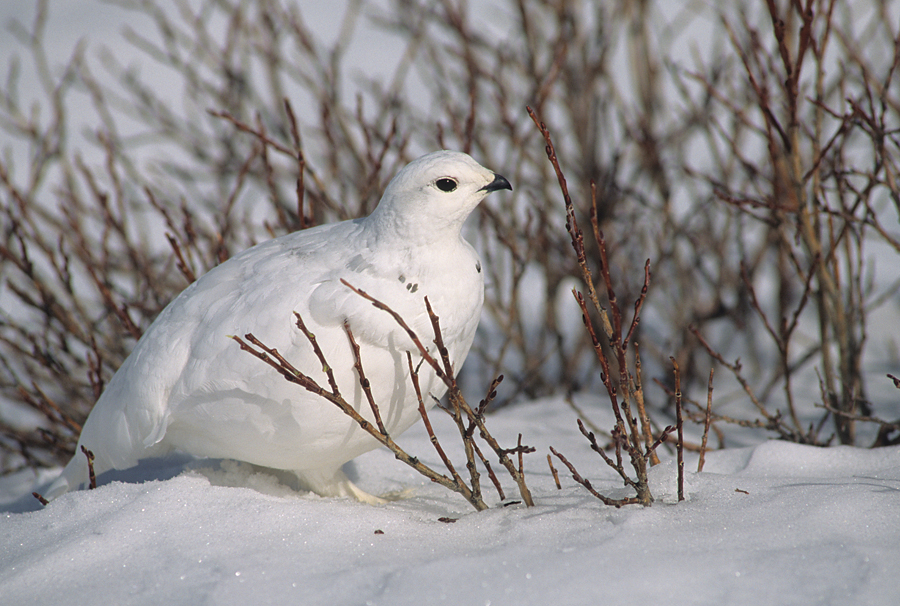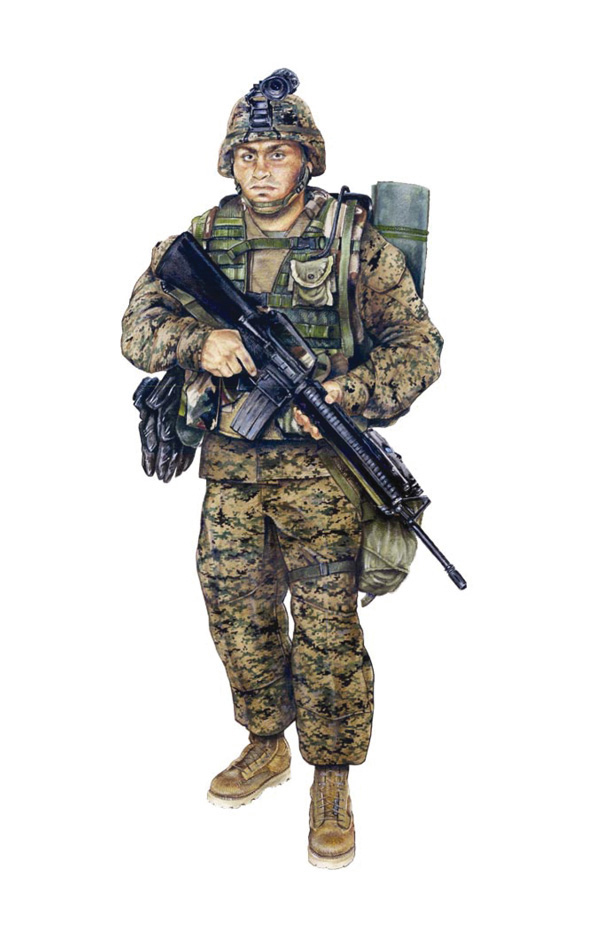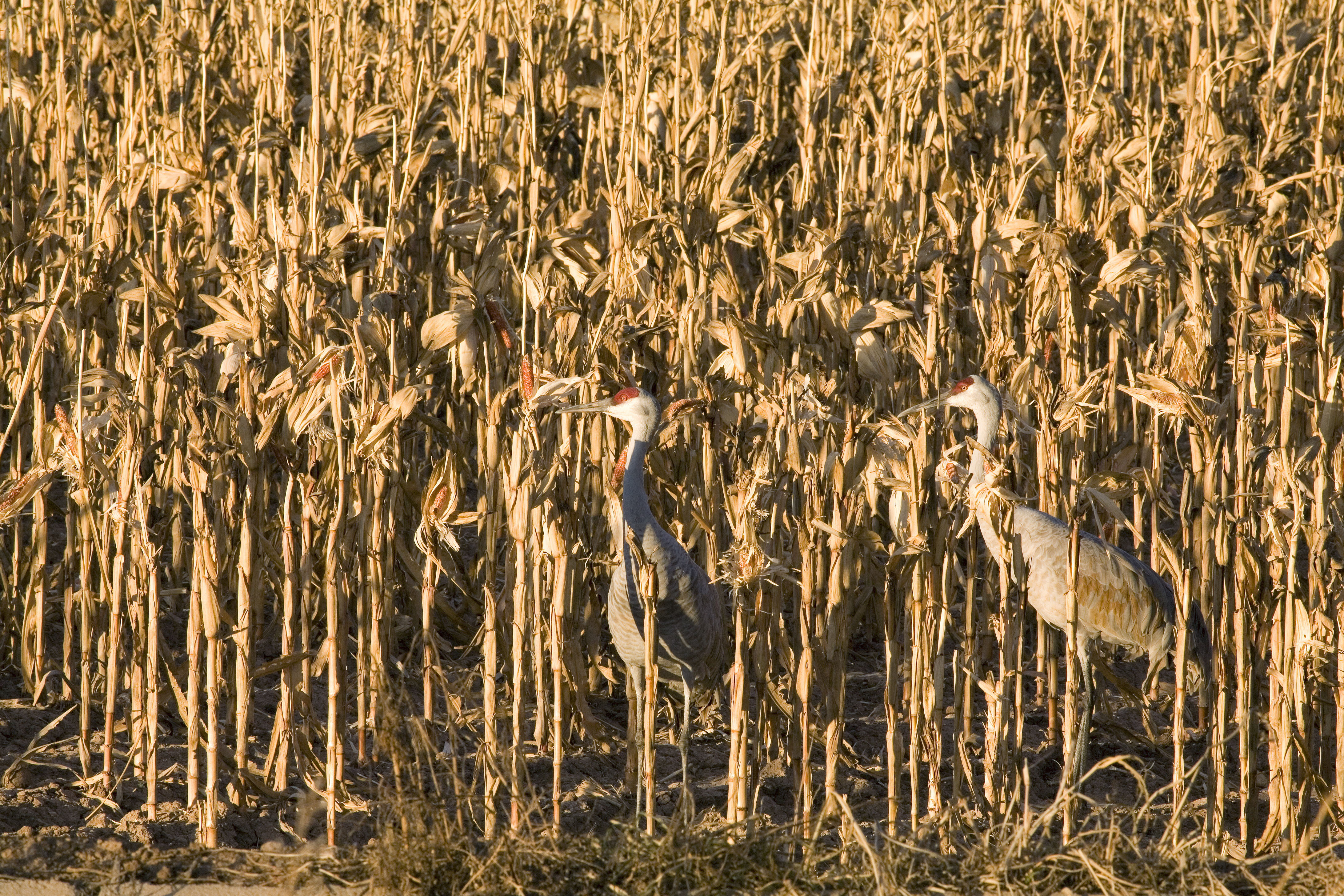Camouflage << KAM uh `flahzh` >> is the art of disguising or hiding military equipment, vehicles, and troops to make them harder for an enemy to see. People borrowed the idea of camouflage from nature. Many animals have the means of blending into their natural background for protection. For example, the fur of some animals in northern regions turns white in winter, to blend with the snow. In the summer, the fur is brown or gray, helping the animal to hide from danger in woods or brush.

Camouflage did not play a major role in warfare until modern times. Older weapons , such as bows and arrows and early firearms , had limited ranges. Armed with such weapons, a camouflaged attacker might hide for an ambush. But the camouflage wearer would be easy to spot in a close-range battle.
Official use of military camouflage began in the late 1800’s, after the advent of long-range firearms. By the time of the American Civil War (1861-1865), rifles could shoot bullets accurately for 300 yards (275 meters). Armies learned that brightly colored uniforms, like the scarlet coats worn by British soldiers, were easily spotted at great distances. Armies began dressing their troops in various shades of brown, such as khaki and olive drab.

During World War I (1914-1918), armies had to hide equipment, especially artillery , from a new threat—the airplane. Camouflage netting was strung over tents and equipment to hide them from above. Leaves and tree branches were put in the netting to make it harder to distinguish from the air. During World War II (1939-1945), much fighting took place in cold, snowy areas. In such cases, the camouflage uniforms were white.

During the Vietnam War (1965-1975), the American military began using uniforms with a pattern of many colors to blend in with the jungle . Today, troops use different camouflage uniforms depending on where they are stationed. In Iraq and Afghanistan , for instance, the pattern consists mostly of grays and browns, helping soldiers to blend in with the countries’ desert environments. In places that have more green plants, such as parts of Europe and North America, the pattern contains more green.
Modern snipers wear camouflage clothing from head to foot, called a ghillie suit. It is covered with loose strips of cloth, leaves, and twigs. A ghillie suit can make a sniper hard to see even 20 feet (6 meters) away.
